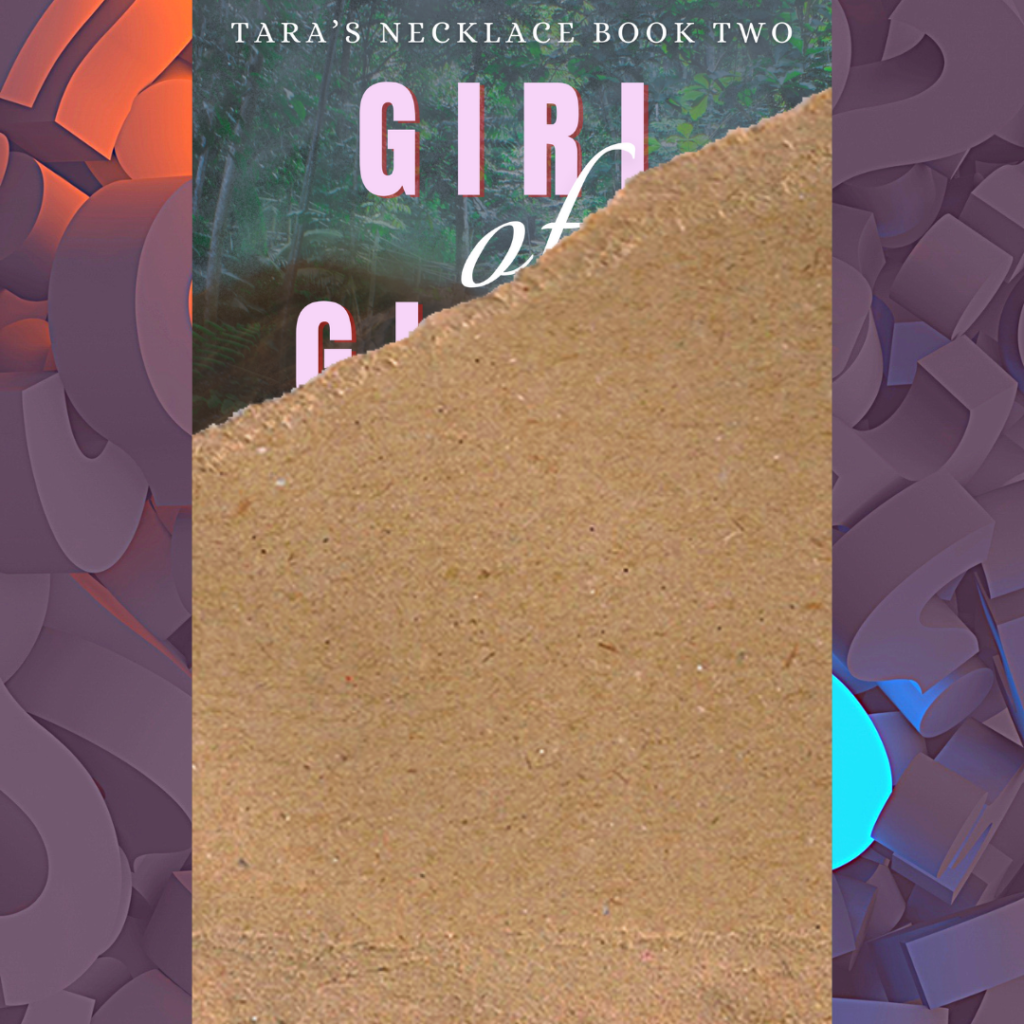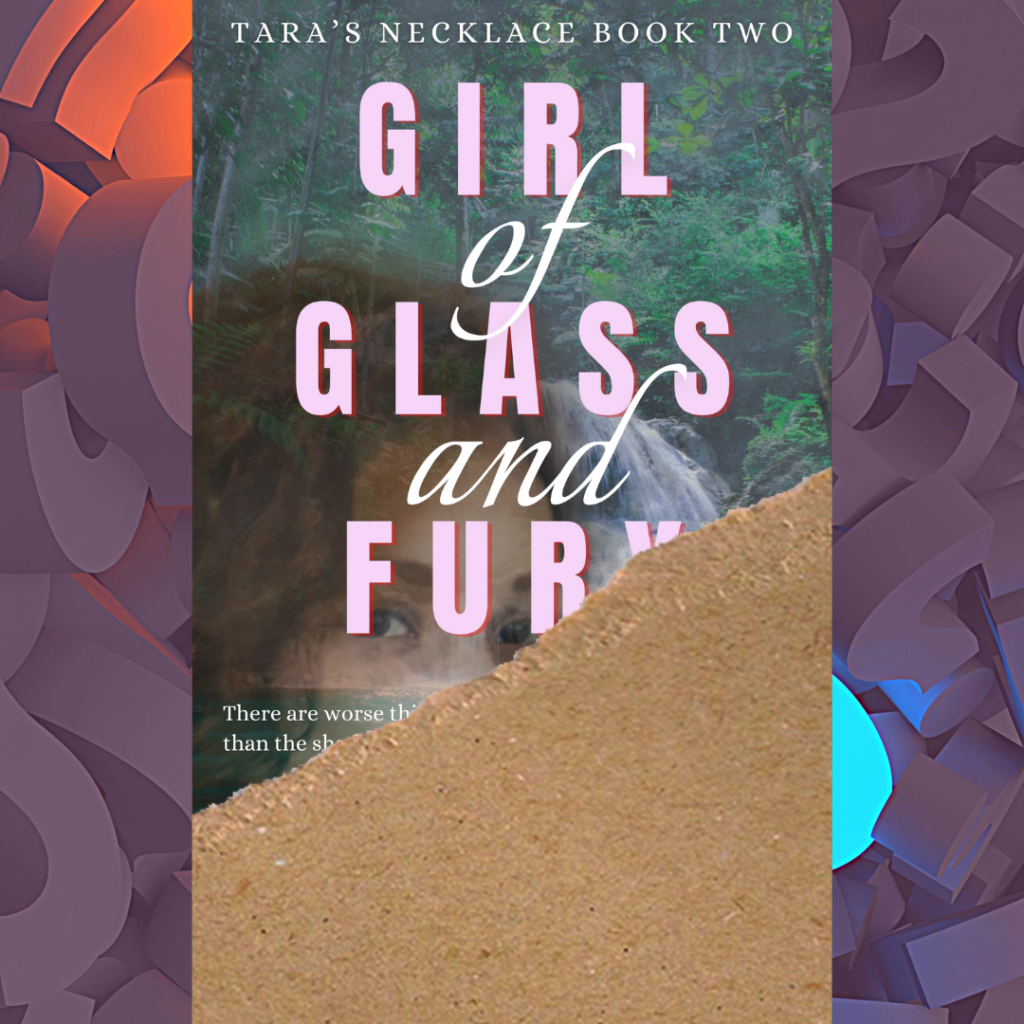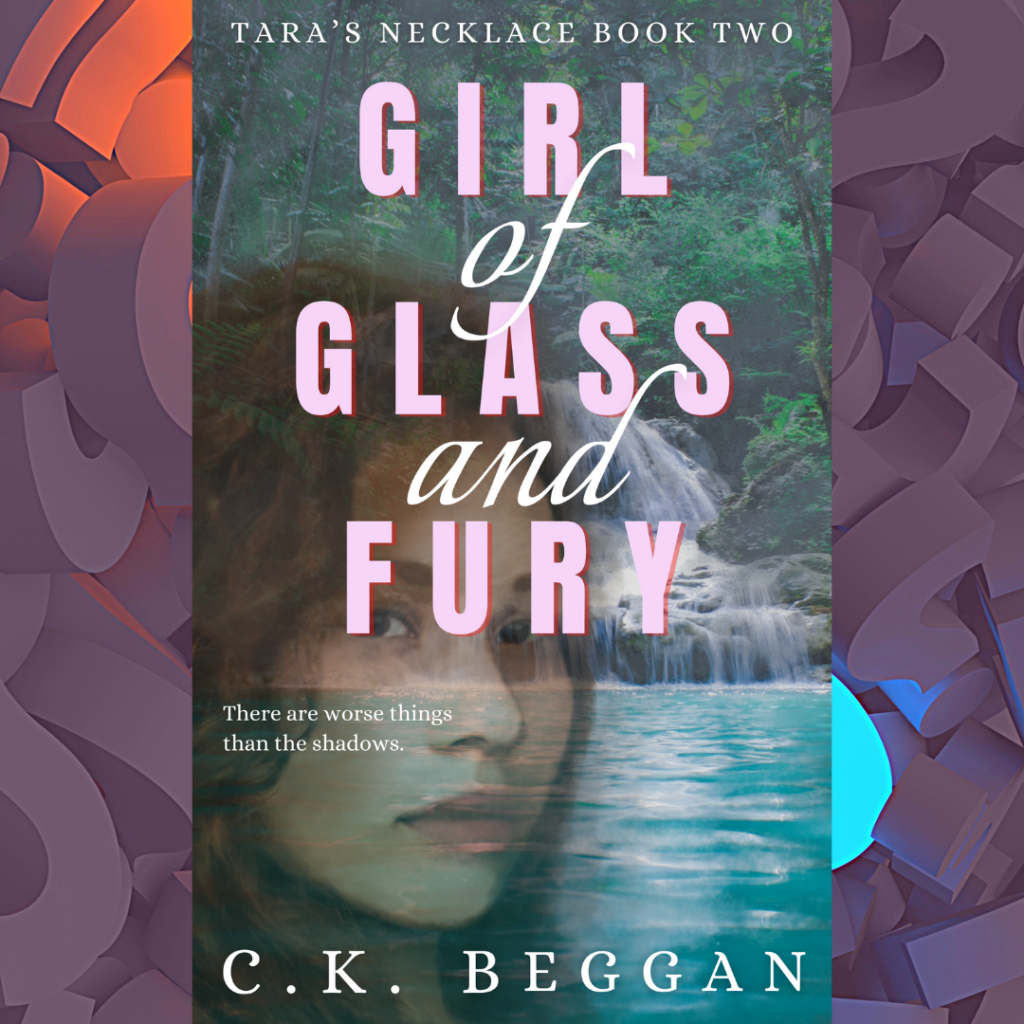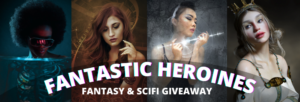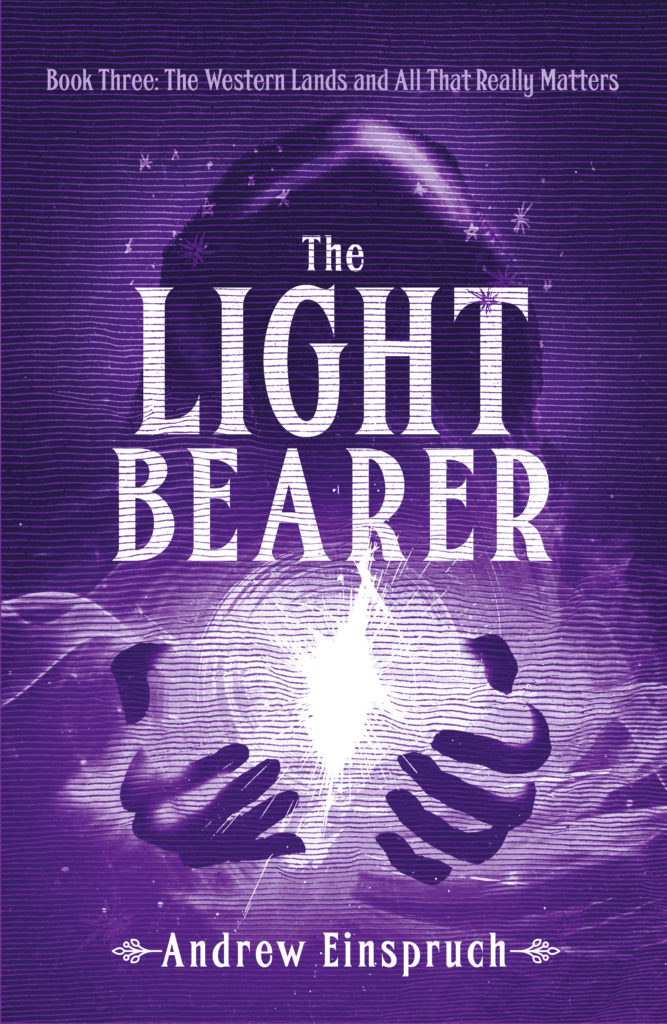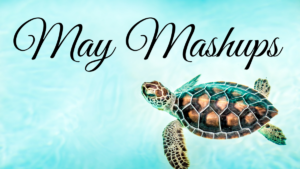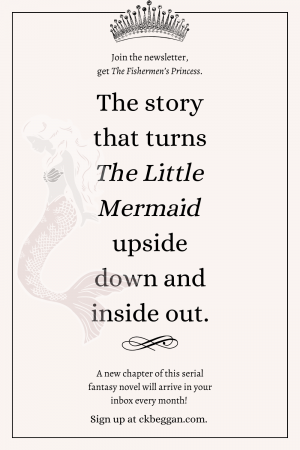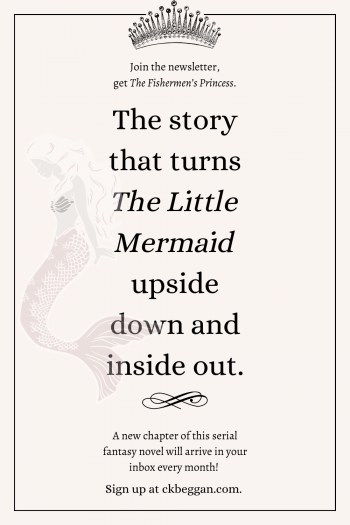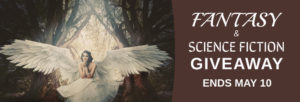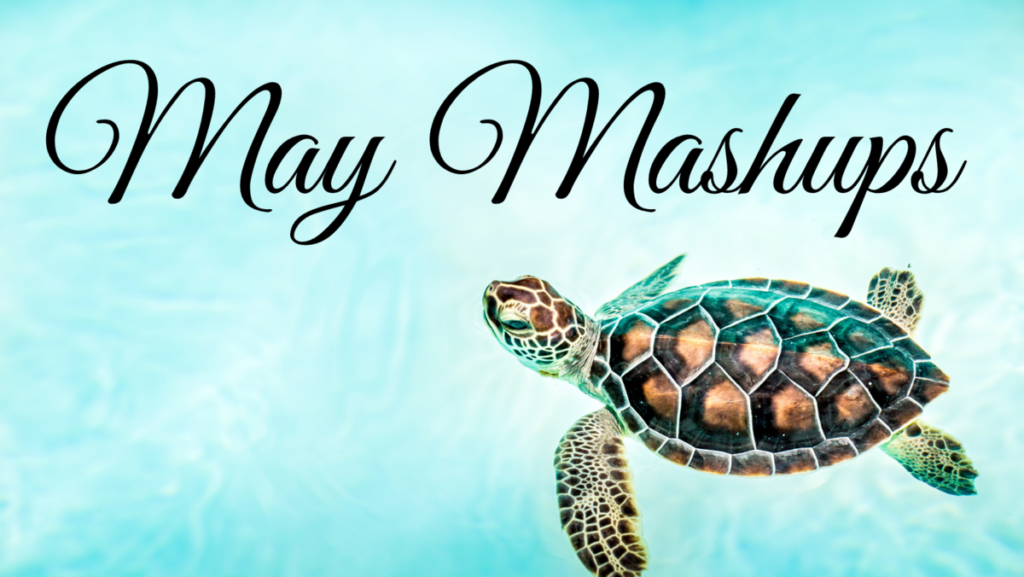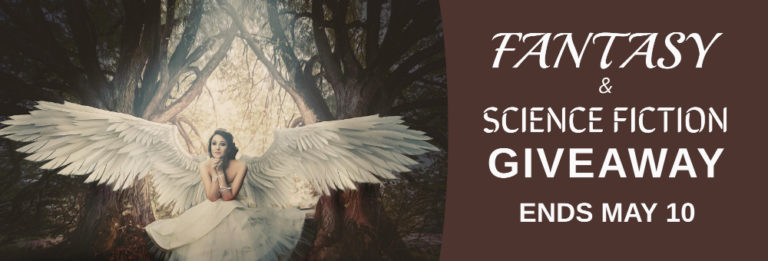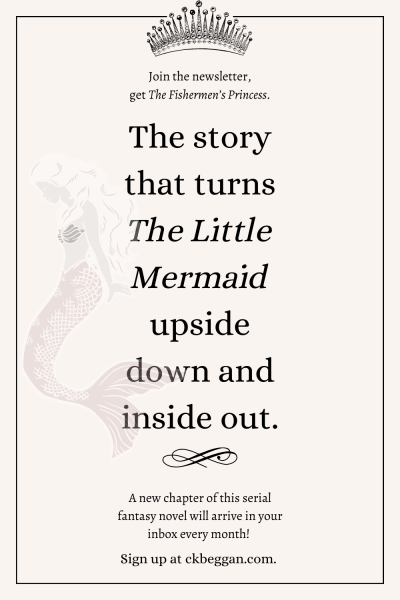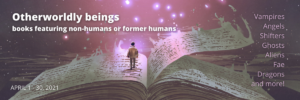June updates
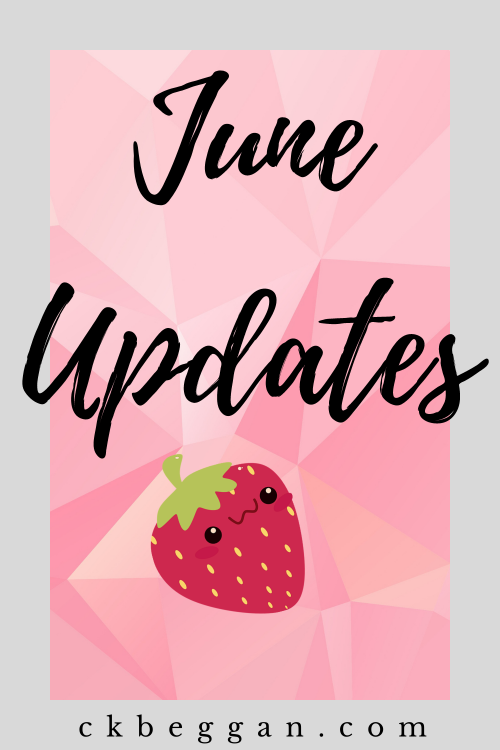
Hi all!
It’s me, your favorite author and book blogger who is never not behind on things! So what am I behind on this time, you might ask?
Books I Recommend and Haven't Reviewed Yet
Between Jobs, by W.R. Gingell – This book is the start of another madcap fantasy series, with a plucky, adaptable heroine and one intriguing vampire love-interest. This book actually convinced me to try learning some Korean!
City of Brass, by S.A. Chakraborty. The start of the Daevabad Trilogy brings fantastic world-building inspired by the medieval Arab world, and multi-faceted characters. Ali’s perspective was my favorite.
The Kingdom of Copper, by S.A. Chakraborty – Things get even darker in Daevabad as multiple plots converge in the city. The perspectives even out in this one. Fair enough, because there’s constant intrigue!
The Theft of Sunlight, by Intisar Khanani – Rae’s story continues from The Bone Knife, cleverly tucked in to Princess Alyrra’s story as the two protagnoists meet. This one reminded me a lot of Alanna: the First Adventure (Tamora Pierce).
What I'm Reading Now
Witches Steeped in Gold, by Ciannon Smart – The prose isn’t as easy to sink into as I’d like, but the world of these island witches (inspired by Jamaican lore) is absolutely fascinating. I keep rooting for one protagonist over the other, and it switches every couple of chapters!
What I'm Writing
Girl of Glass and Fury is still expected this summer, though I haven’t gotten far enough to pick a release date. It’s looking like August right now.
What I'm Revealing
The cover of Girl of Glass and Fury, of course! (If you’re subscribed to my mailing list, you’ve already seen it!) The cover reveal will be this coming Sunday on the blog.
What I'm Blogging About
NaNoWriMo is now five months away! For all those preparing to write their own novels, I’m including some new special feature posts on writing.
With any luck, I’ll also have some of the above books reviewed this month, and perhaps that pesky tatting article I just have to take the pictures for…
What I'm Reading Next
That’s all for now! Have a wonderful June, everybody.
Cheers,
CKB
Protected: The Fishermen’s Princess Chapter Three
Interview: Andrew Einspruch (The Light Bearer)
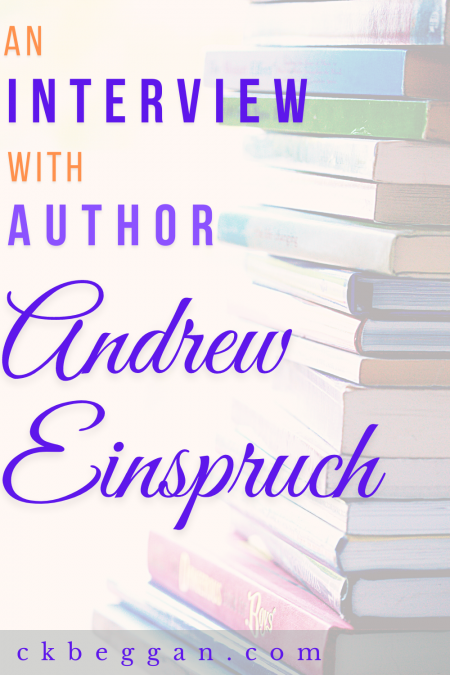
Recently, I had the privilege of interviewing author Andrew Einspruch (The Purple Haze), author of the wonderfully quirky fantasy series, The Western Lands and All That Really Matters.
Besides the humor he brings to fantasy—a rarity in a sometimes overly serious genre—Andrew Einspruch is an interesting interview subject for many reasons. One such reason is his other job: that of caretaker for animals in the A Place of Peace farm animal sanctuary.
You recently won an ACT Writing and Publishing Award for 2020 Fiction, for your fantasy novel The Light Bearer (Book 3 in The Western Lands and All That Really Matters series). What went through your mind when you heard you won?
Actually, I missed the email that told me I’d won. I got an email that said, “Come to our office to have a video made of you?” and I was like, “Huh?”
But, of course I was totally thrilled. It is always lovely when someone likes your work, and it was my first writing prize. I was super chuffed. And then I told myself to get back to writing.
I describe your writing in The Western Lands and All That Really Matters as The Hitchhiker’s Guide to the Galaxy for fantasy, but it also has a heart-warming side. Were there any particular books you’ve read that helped you develop your style?
I’ll take being compared to Douglas Adams any day. 😁
Developing my style probably comes down to everything I’ve read and enjoyed. I certainly loved the Hitchhiker’s books. But I’ve always been drawn to wordy, nerdy humour — I’m a big fan of Weird Al Yankovic and Tom Lehrer. Monty Python was a big influence when I was young. I’m a huge fan of William Gibson, and make a point of re-listening to his books every couple of years. But it all mushes together in my brain into a glob of influence rather than a single thing that I can point to.
To borrow a question from Seth Meyers, when did you first know you were funny? Was there an aha moment when you realized you had the ability to make people laugh and entertain them?
In high school, I was involved in my temple youth group’s production of the musical “Two By Two,” about Noah. I played Noah’s oldest son, Shem. I don’t think I was all that good, and I certainly had no idea what I was doing, but somehow — miraculously — on the evening of the performance, I relaxed into the role and brought some life to it. I delivered one of the lines (sorry, can’t remember which) using a funny, mocking voice I’d never used before. It got a big laugh, and the first hints of a light bulb went off over my head.
Eight years later, my good friend Robert Lowe brought improv comedy to Atlanta. We knew each other from our aikido training, and in 1984 he said, “I’m going to start teaching improvisation,” to which I said, “I’d do that.” So I went along to the first class he taught, and it was only a matter of weeks before that I went on stage for the first time. Audiences laughed and I became part of the troupe that evolved from those first classes.
You’re originally a Texan! What brought you to New South Wales, Australia, and how long have you lived there?
In 1986, I met the most wonderful woman in the world, an Aussie named Billie Dean (see: billiedean.com). Eleven months to the day later, we got married. I moved to Oz to be with her, and we’re still together today.
What’s the most Texas sentence you can think of?
“Hook’em horns!” (It’s the chant and finger symbol of the University of Texas at Austin, where I did my undergrad work.)
Having said that, when I meet someone who knows a language I don’t know, I try to get them to translate, “Get yer butt off my Cadillac.” I’m led to understand it is a difficult concept to translate into Swahili.
What’s the most NSW sentence you can think of?
I can’t find the actual quote online, but I once heard that the late NSW Premier Neville Wran once said of politics, “You can’t grow mushrooms in a mortuary in NSW without someone complaining.” Whether he said it or not, I love that quote.
Let’s talk about all those lovely, quirky characters you write. Your characters were specifically mentioned as a reason the ACT Writing and Publishing Awards chose The Light Bearer. What stands out to me is the humanity you give each of them (regardless of species!). Did that come naturally? Or did some characters challenge you a bit more?

The characters’ humanity emerged quite naturally. I live with hundreds of animals, and the philosophy I’ve adopted from Billie is that we treat them with respect, dignity, reverence, and a sense of equality. Bringing that to my fiction was not any kind of stretch, it was an extension of who I am.
Animals play a large role in the Western Lands and All That Really Matters series. They also play a role in your day-to-day life. Tell me about the Deep Peace Trust.
The Deep Peace Trust is our family-run charity that fosters deep peace and non-violence for all species who share our planet. Our compassionate action is running A Place of Peace, Australia’s largest farm animal and wild horse sanctuary (see deeppeacetrust.com). We have cows, horses, goats, sheep, cats, dogs, and geese, all of who faced a not-great future until they came here.
In February 2020, your newsletter about the bushfires appeared on this blog. How did the bushfires of 2019-2020 change the sanctuary and the landscape around you? Have you seen much recovery since that time?
The fires were devastating to our part of the world, both physically and emotionally, especially since they came at the end of three hard years of drought. We lost most of our bushland to it, around four kilometres of fencing, and our cattle yards.
But we were lucky. The sanctuary animals were all OK, and while there were certainly wildlife losses, we were able to put out food for those who survived to help them keep going. Others, even neighbours, were hit much harder than we were, and it was a very scary time. Still, we’re here to tell the tale and the bush is showing its resilience in the year and a half since.
Humanity is living at the sharp edge of climate change. We all have to do what we can to address that problem in a serious way or things will only get worse.
What are the biggest challenges you’re facing at the sanctuary right now?
The biggest challenge for us is always to make sure we have enough hay and feed to carry the animals through winter and other tricky times. So, fundraising is a constant need for our not-for-profit charity. The animals are our first and last priority, and making sure we have the means to provide for their sanctuary is issue #1.
After that, it’s making sure that everything we need for their care is in place, whether that’s fencing for the paddocks or supplements for challenged or special needs animals.
Wondering what brumbies are?
A brumby is a well-adapted feral Australian horse and a cultural symbol. Concerns about overpopulation and over-grazing mean brumbies face some of the same challenges as American Mustangs. Want to know more? This article from ihearthorses.com gives a summary.
Have the animals at the sanctuary inspired any of your characters?
Absolutely. The wombats here inspired the Wombanditos (the fiercest gang with bad eyesight in all the realms! Heeyahhhh!). Our geese inspired a character in the not-yet-released book five named Headlong Helda. And our brumbies have influenced my thinking about the horse characters, like Hector and the Nameless One.
You recently said you’re 87k into book five of Princess Eloise’s story, which for you is only three-quarters done. Coming from a middle-grade background, was learning to write longer works ever a challenge for you?
It wasn’t even middle grade. My kids books were for primary aged readers, mostly. And yes, writing longer was definitely a challenge. I had to learn that if the characters were here, and you wanted them over there, you had to write the bits to connect those dots. Plus, I had no idea how long these stories were going to be. When I started, I thought, “Oh, this’ll be a little 35,000 word YA book.” The Western Lands and All That Really Matters books are more like 125,000 words each.
When all’s said and done, how many books do you think will be in the Western Lands series?
There are three books that are out (The Purple Haze, The Star of Whatever, and The Light Bearer), plus the two standalone prequels (The Wombanditos and The Thorning Ceremony).
As I write, book four is just about to go to the editor. Book five is now 106,000 words into its draft, and I’ve written the first 2,000 words of book six. So, definitely those six. After that, I’ll have to see.
Do you have an idea for your next series?
The above books will likely keep me busy for a while. I have vague ideas for other stories to set in the Western Lands. But there are other books whispering to me, asking me to give them attention. I’ll use the time that it takes to finish book six to figure out what’s going to be written after that.
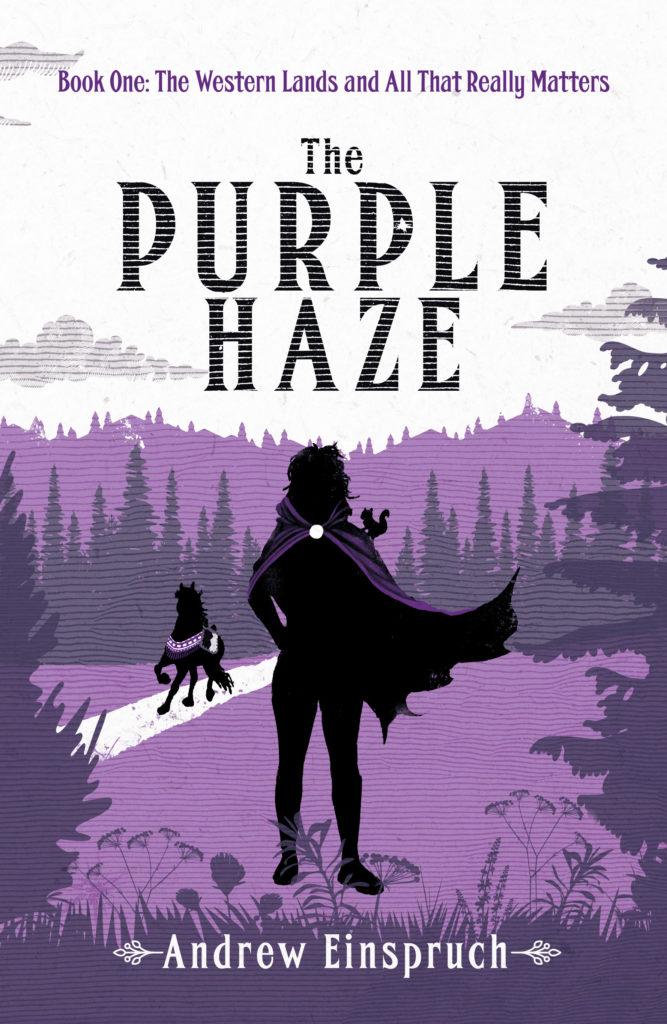
Thank you so much for joining me today. For your final question, I’d like to give you the same challenge I gave to the authors in my first interview. Please fill in the blank:
They lived happily ever after and were kind to all they met.
The next installment in The Western Lands and All That Really Matters will be released later in 2021.
Andrew Einspruch is the author of The Western Lands and All That Really Matters fantasy series and both fiction and non-fiction books for young readers. He lives in New South Wales, Australia. To learn more about this author, please visit https://andreweinspruch.com.
Want to help the Deep Peace Trust? Visit deeppeacetrust.com/donate or, for their current fundraiser, https://chuffed.org/project/winter-in-your-hands. To learn more, visit deeppeacetrust.com.
Review: Tempests and Slaughter (Pierce)
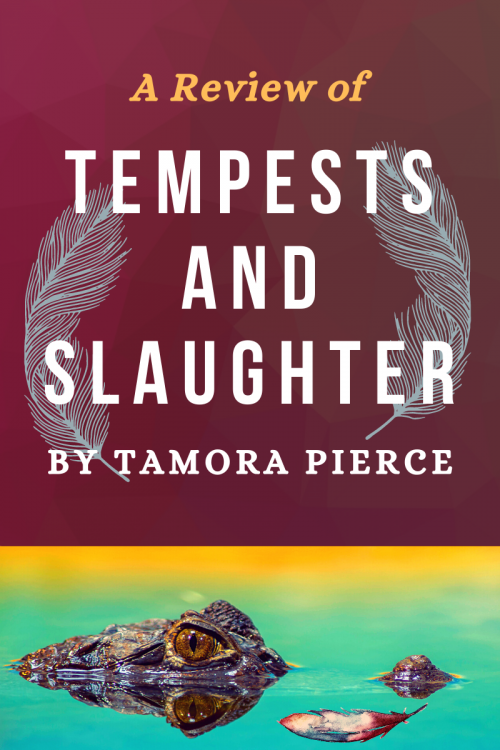
This is the story of how Numair, a beloved character in The Immortals series, became the (ahem; nerdy but a touch amorous) sorcerer we know and love. It’s the story you didn’t know you needed, with a quieter approach to a Hogwarts-like school and a simmering undercurrent of the disaster that is to come. It has a different tone than some of Tamora Pierce’s other YA novels, and I think it would be enjoyable for readers of fantasy as well as YA fans, and to newcomers to Pierce’s work.
Gladiators aside, this is not the violent story you’d expect from the name. The key word, in fact, is in the series name: The Numair Chronicles. There are animal gods, two kinds of magic, first love, dedicated friends, puberty and one prodigiously talented little boy who is about to grow up.
Origin story
Tempests and Slaughter tells the story of a young Numair (Arram Draper) and Ozorne, the “leftover prince” who will become the villain in The Immortals series.
Arram Draper has a Harry Potter-like knack for finding conspiracies and trouble. What he lacks that Harry excels at is the ability to fully pursue them. The future Numair is often told to stay out of it and keep quiet by his trusted teachers, who vow they’ll handle it. But the trouble and foreshadowing just keep coming. Sound frustrating? It is! But this also makes it realistic, interesting and very, very tense.
Arram’s first friend at a school for older mages-in-training is another prodigy: the “leftover prince,” Ozorne. There are peeks at a temper, but his bad side, including his biases, get written off due to his family’s tragic history. And after all, he’s just a boy mage. What’s the worst that could happen?
Tempests and Slaughter is full of slow-burn foreboding like that. It allows the reader to know better without begrudging the characters for not putting two plus two together; they can’t see the future, and the vast majority of the time, Ozorne is no different than any other good-natured but burdened kid. He’s is a protective, wonderful friend to Arram, like the perfect older brother for the vulnerable young mage.
Another perk of being friends with Ozorne is that Arram meets Varice, a sensible and increasingly elegant young woman whom Arram risks ruining their trio of happy friends over: he doesn’t know Varice for long before he has his first real crush. To Arram, the far more mature Varice seems unattainable, even as he takes on a slew of tasks meant for older teens or an adult.
This book left me eager to read more, ready to re-read The Immortals series and, sometimes, very annoyed. There is no satisfying wrap-up in sight: readers of The Immortals know more trouble is down the road, and nothing that happens in this series will change it. The future is literally already written.
But the looser structure of the story, flying through Arram’s years of training and many growth spurts, leaves room for a lot of action and milestones. Very little of the problems he comes across get resolved (or can be resolved) in one book.
This is a story that just keeps opening further and had to pause somewhere, which means I feel a little tortured between books. Fortunately, it’s a great thing to be tortured by Tamora Pierce’s characters, and I will absolutely have to read what happens next.
Tempests and Slaughter is a classic coming-of-age tale with a dark, magical twist. While Arram undergoes many rites of passage throughout the story, his status as a prodigy (and friendship with a river god) means he also takes on many roles suited for an older teen or adult.
Tempests and Slaughter is never overly violent and focuses mostly on relationships between the characters. Fans of fantasy in school settings will really take to this one. Fans of The Immortals series will be happily glued to it.
To learn more about this author, visit tamora-pierce.net.
Review: The Empress of Salt and Fortune (Vo)
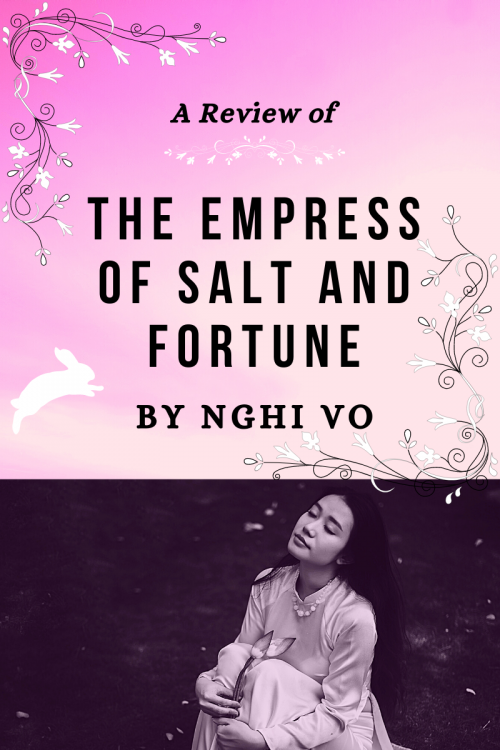
“The Empress of Salt and Fortune belongs to all her subjects, and she was romantic and terrible and glamorous and sometimes all three at once. There are dozens of plays written about her, and some are good enough that they may last a little while even after she is gone. Older women wear their hair in braided crowns like she did, and because garnets were her favorite gem, they are everywhere in the capital.
“In-yo belonged to Anh, but Thriving Fortune only belonged to us.”
– Rabbit, telling her story to Cleric Chih and Almost Brilliant
If you read any book this month, let it be The Empress of Salt and Fortune. It won’t take long. This beautifully written, surprisingly short book is as tidy as cleric Chih’s records, and as wonderful and heartbreaking as the story of the Empress of Salt and Fortune herself.
The writing leans toward prose (lovely, fast-moving prose), the ending is a bit abrupt, and I felt one of the key emotional moments in The Empress of Salt and Fortune was a bit too underplayed. Yet reading over the ending and some of my highlights, I feel that same heartache the story left me with all over again. I’m happy to overlook my grumblings about those things, and I think many other readers will be, too, precisely because of that writing and the emotional punch it carries.
“…You could also find a beauty in it, a kind of peace even in something that was at first so very unsettling. I’d cried the first time I saw the luminescence of the lake. Now most nights, I slept on the porch, bathed in its red glow. If it was a monster of some kind, it was a monster that watched over me, and, at the very least, it had not devoured me yet.”
– Rabbit, on Lake Scarlet
The Empress of Salt and Fortune is a story full of uncommon elements. The opening chapter is packed with world-building, without pausing to explain it; protagonist Chih is in a hurry, after all. Instead of grand battle scenes in this tale of revolution, there a plot twists. The title character appears only once as a ghost, treated reverently by other ghosts on a road, and Chih, who is at first mistaken for a girl by part-time narrator Rabbit, is a cleric from the abbey at Singing Hills and not a girl. In the world of The Empress of Salt and Fortune, clerics, who are charged with traveling the world to record its history and events and locations, are they and them.
Throughout the book, chapters often begin with Chih and Almost Brilliant’s inventory of the house at Lake Scarlet, the sarcastically named Thriving Fortune. This is part of Chih and their neixin companion’s work. “The abbey at Singing Hills would say that if a record cannot be perfect,” Chih tells Rabbit, the now-elderly servant she meets there, “it should at least be present. Better for it to exist than for it to be perfect and only in your mind.” Pride drives Chih on this detour to the newly declassified Lake Scarlet; she desires to be the first cleric to record Thriving Fortune’s details. “Welcome to your place in history, grandmother,” Chih tells Rabbit as the now-elderly woman begins her story.
And that story matters a lot, because of its famous former resident.
In-yo, the Empress of Salt and Fortune, and Rabbit meet in the capital, where Rabbit is a palace servant and In-yo has become the new wife of the emperor. As a northerner, from a country known for mammoths and being bullied by Anh, In-yo is ill at ease in the south, where mages keep winter at bay and mammoths can’t survive. She isn’t well-received, either. The ladies and servants of the court fear her at first, “because the women of the north were all thought to be witches and sorceresses. Then [the noble ladies] discovered her great secret, that she was only a heartbroken and lonely girl, and she became of no account at all.”
Though In-yo is exiled to Thriving Fortune after producing an heir, clearly she plays a long game. The beginnings of the revolution trickle into the story with details not even Rabbit, devoted to the Empress as she is, could make sense of at the time. In-yo is a complex character, seen only through the eyes of others but depicted sympathetically and unflinchingly by Rabbit. In The Empress of Salt and Fortune, revolution is told through relationships rather than battles.
There is more to Rabbit herself, too. “For a single faraway moment, she looked like something other than a simple servant woman, but it was there and gone so fast that Chih could not say for sure what it was.” Naturally, Rabbit is more entwined with history than anyone knows. She suffers for her association with In-yo, and without it, too.
Rabbit’s life with In-yo is also easier and less formal than at court. There are fewer risks, too, for many of the years they reside there. But later experiences that could have left her bitter and angry never affect the choices she makes, though they leave her feeling worn and older than her years. She’s an understated, constant and lovable presence in the story.
“She had a foreigner’s beauty, like a language we do not know how to read…her face was as flat as a dish and almost perfectly round. Pearl-faced, they call it where she came from, but piggish is what they called it here.” And “as far as In-yo was concerned, she had no equals in all the empire.”
– Rabbit on In-yo, the Empress of Salt and Fortune
Rabbit sums it up best, in one of her recollections, with one of the most quotable lines in the book (and there are quite a few): “One drunken evening, many years on, In-yo would say that the war was won by silenced and nameless women, and it would be hard to argue with her.” Alone at Thriving Fortune, having outlived the Empress and so many others but still carrying their secrets, Rabbit could easily have been one of those women without Chih’s arrival. It’s this sad reality that brings a quiet joy to Rabbit’s story of loss, revolution and betrayal.
The world-building of The Empress of Salt and Fortune is lightly sketched but creative. Rather than spend a lot of time on the details, key aspects are revealed in matter-of-fact conversation, from the glowing Lake Scarlet’s origin as the resting place of a dying star, to a carp that became a calico dragon, and the ghostly imperial palanquin that Chih encounters on the road to Thriving Fortune. There are hidden dangers from creatures we never quite see, and ghosts are omnipresent. It made me want to continue journeying with Cleric Chih and Almost Brilliant—and Vo’s beautiful writing—just to see more of it.
To learn more about this author, visit nghivo.com.
Review: The Road to Farringale (English)
This week brings us another funny fantasy from an indie author. It’s time for…
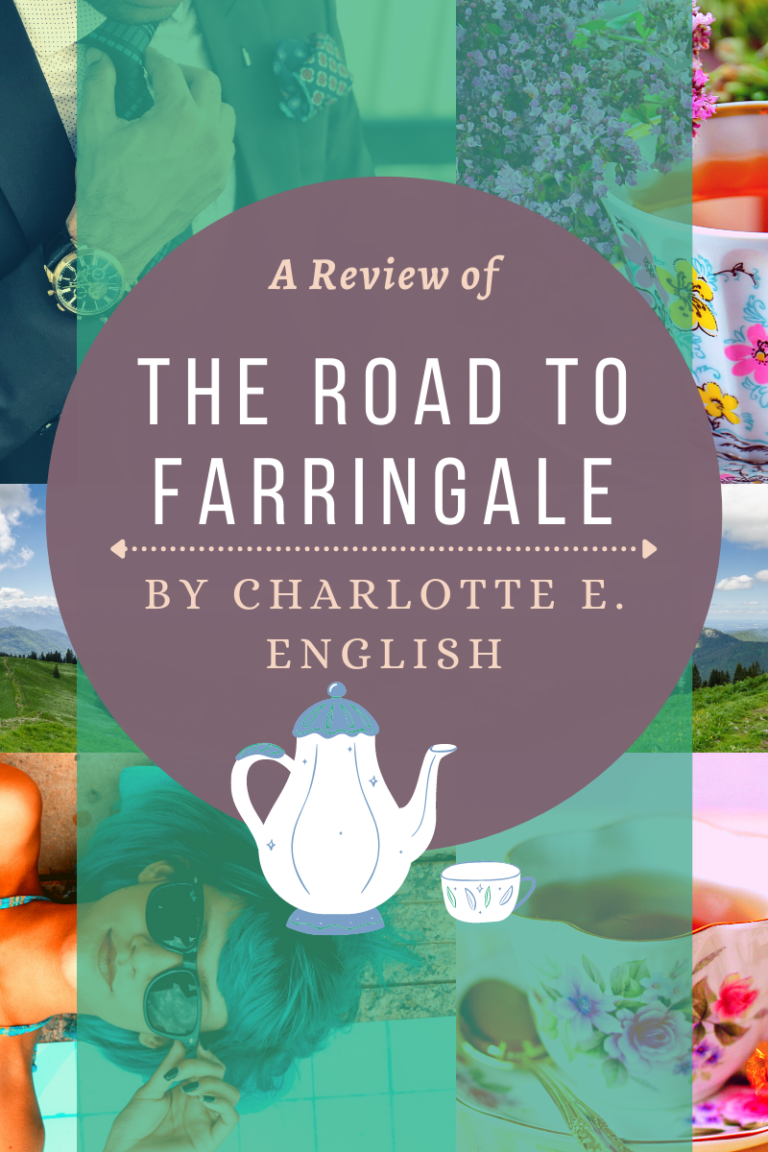
Author Charlotte E. English has a sense of humor—there’s no doubt about that. In this quirky and lovable tale of a secret, magical society trying to save magic in the U.K., trolls are the focal point.
Narrator Cordelia Vesper, aka Ves, is a fast-talking, cerulean-haired veteran of the Society for the Preservation and Protection of Magickal Heritage. As an agent of the Society, she is also a resident of the endearingly Hogwarts-like, sentient Yorkshire country manor known as House. With her new partner, Jay Patel, Ves is off on an unrelated errand when she discovers something is very wrong with a troll enclave.
The residents of South Moors Troll Enclave aren’t just “in Recluse,” as many communities are. The trolls living there have become apathetic in the extreme. Worse still, they’re about to eat a pair of endangered alikats, part of a class of creatures that more or less feed off of magical energy. It’s more than against the rules—it’s unthinkable.
The famous Cordelia Vesper
Narrator Ves is fast-talking, quirky and has a “vast knowledge of magickal history. Specialised knowledge of ancient spells, beasts and artefacts. No insignificant skill with charms” and “Great hair.”
As Jay and Ves visit more of the reclusive enclaves, a pattern emerges—including the complete disappearance of once-thriving communities of trolls.
The trolls of The Road to Farringale aren’t what you’re imagining (the Harry Potter similarities stop here). Though some trolls are more like those in fairy tales and “will eat anything,” most are educated, fastidious and elite gourmets, “Trolls whose delight in beauty, culture and the arts go virtually unrivaled across the world.”
One such troll is Baron Alban, the handsome and famously single representative of the troll court.
When Ves, a perfectly self-possessed (if directionally challenged) agent, meets him, she’s stunned. To Ves, Baron Alban is “the most gorgeous troll I have ever beheld, and I mean gorgeous in the sense of spectacularly handsome. All height and muscle and perfect posture was he, his bulky shoulders encased in a dark blue velvet coat over a silk shirt. He wore a kind of cravat, and an actual top hat lay on the table beside him.” Those kinds of trolls.
Despite his Jane Austen-era styling, Alban is a member of the modern troll court. The original was lost and is permanently sealed away, and is not a little reminiscent of Camelot. Alban, a noble-born George Clooney with a “pleasing jadeish hue,” has secret knowledge Ves needs in order to solve the mystery of the apparent illness destroying troll enclaves around Britain.
With her is the aforementioned Jay Patel, the overwhelmed newbie who, unlike Ves, can “find [his] way out of a bucket.” Recruited for his rare ability to travel point to point at dizzying (read: nauseating) speed, we know little about Jay other than that he is the frazzled foil to the self-assured Ves. He still manages to be lovable, in the way that only disheveled characters, who mirror the readers’ disbelief at every madcap turn in the story, can be.
That leads me to what’s missing from this charming story, which moves at the speed Ves talks. There are a host of amusing, interesting side-characters, who get almost equal backstory to the central characters.
I would’ve liked to learn more about Ves’s backstory, what drove her into the field besides her passion for saving magick and what her family and upbringing was like. I wanted to learn more about Jay, too and see him in the quiet moments when he isn’t slumped over beside an empty vat of hot chocolate—the Jay that exists outside of his job, and the Ves that existed before her all-consuming work. I hope future installments of the series cover this, because it’s a shame not to hear more about where these delightful characters come from.
Magical beasts aplenty
Griffons, Pegasus, trolls and a sentient country mansion round out The Road to Farringale’s enchanting and amusing take on a magical U.K.
It’s still a wonderful ride, dotted with enchanting magical creatures, a disembodied voice known only as Milady, who runs the Society, and little gems like this: “I don’t object to a little villainy, mind,” says Ves. “I only draw the line at a lot.”
In The Road to Farringale, even the magical creatures come in wacky packaging, when Ves produces enchanted syrinx pipes from…ahem…somewhere close to her heart. Questions Jay in his usual disbelief, “You just whistled a quartet of winged unicorns out of your bra?” (“Never underestimate the benefits of a good bra,” Ves quips in reply.)
If this sounds like your kind of book—or if you just need a pleasant, amusing diversion—by all means, pick up The Road to Farringale. Even if you aren’t totally satisfied with the time it devotes to its characters, you’re in for an enjoyable read.
To learn more about this author, visit charlotteeenglish.com.
May Updates
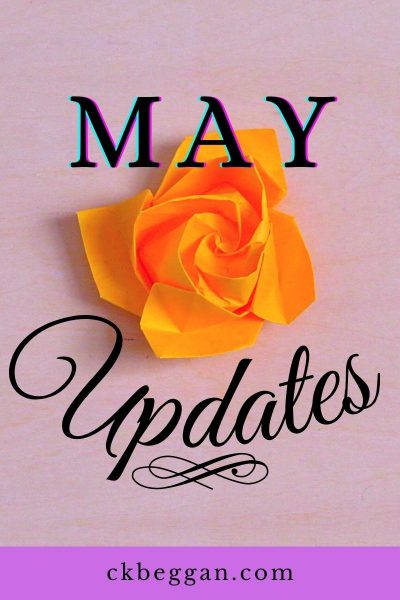
Hi all!
This May, the snow is gone (for now!), the trees are flowering and my projects are slowly coming together.
At the end of last month, the first two chapters of The Fishermen’s Princess were released for subscribers to my mailing list. This month will bring a more usual single chapter. The story currently follows Drina as she grows up and steps into her role as princess. That includes an arranged marriage!
On a personal note, I am a real language hound. I studied Japanese in college and have tried to keep it up as much as possible. I just finished the first level of Duolingo’s Japanese course. It was a great refresher and filled in some content I was missing (including things I was familiar with while living in Japan but never knew quite how to say).
Fun fact: at Japanese fast-food restaurants, you must ask for ketchup when you order. I often forgot to do this, much to my chagrin (I love ketchup, it’s the perfect condiment). Whenever I forgot, I was always too embarrassed of my language skills to walk back up to the counter and ask!
Now, what will this month bring to the blog?
Playing Catch-Up
I still have reviews coming of The Road to Farringale, by Charlotte E. English, and the full review of The Empress of Salt and Fortune. And that lace-making article is still in the works!
Upcoming Reviews & more
Sometime in the next two months or so, I’ll be adding reviews for Intisar Khanani’s The Theft of Sunlight, Tamora’s Pierce’s Tempests and Slaughter and a review of at least one of the books in The Daevabad Trilogy, by S.A. Chakraborty. And of course I have to talk about W.R. Gingell’s Between Jobs from her City Between series!
I also have another author interview in the works, which I hope to bring to you in this month or the beginning of June.
Promos
One of last month’s promos is continuing until May 10th. For the rest of the month, I’ll have two going, all through BookFunnel.
You should also be sure to watch for an upcoming 99c sale of Girl of Shadow and Glass!
Now for the promos from BookFunnel:
This new promo is for all the sci-fi and fantasy lovers out there. Find free samples and whole titles available for download.
More giveaways! Mashups are stories with a blend of two genres. In the case of Girl of Shadow and Glass, sci-fi elements are incorporated into the world building, which is more like solar system-building.
This one began April 10th and will finish up May 10th. Once again, all the listings are for free books and samples in the sci-fi and fantasy genres.
Comics on the way!
I’ve been sitting on new comics in the Growin’ Pup and Social Isolation series. I hope to get both out soon.
I also still have some partly finished episodes of Princess Disasterface to complete. With my second draft of Girl of Glass and Fury in need of finishing, I can’t give you any definites, other than that I am definitely behind on everything!
Thanks for reading! Till next time.
Cheers,
-CKB
Protected: The Fishermen’s Princess Chapters One & Two
The Science of Phoenixes
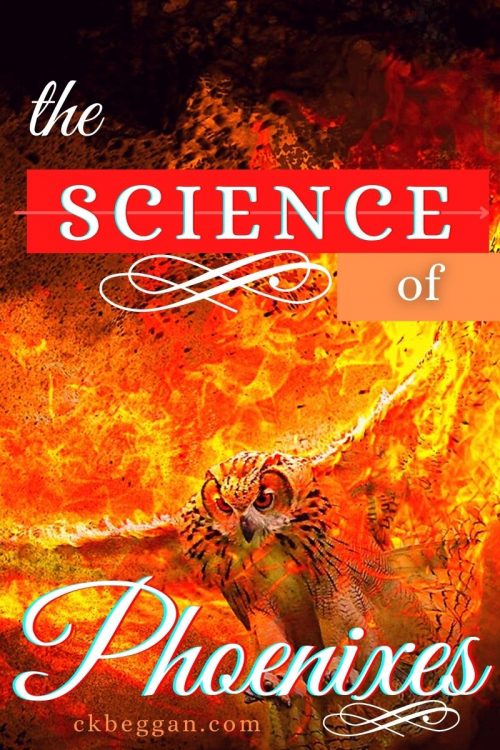
Recently, author Sarah K.L. Wilson (Sting Magic) posed a fun question in her newsletter. With her new series, Phoenix Heart, on the horizon, she made her own list of phoenix pros and cons (quoted with permission):
PHOENIX PROS
– they light things up!
– always good for toasting marshmallows!
– can’t keep them dead permanently
– vibrant personalities
PHOENIX CONS
– they tend to light things on fire by accident. Oops!
– these night owls are dead during the day – which is tough when you need their help!
– fiercely loyal to their riders, it’s hard to make them care about any other loyalties
– when you’re so beautiful, it’s hard not to look at your reflection in a passing lake.
Ms. Wilson then invited her readers to respond with their own pros and cons.
And that’s when I put my nerd thinking cap on.
I’ll be the first to tell you that, unlike my siblings, I’m not in STEM in any way, shape or form. I did pretty badly at science in school, as a matter of fact. But for whatever reason, science news really clicks for me. If only they could write text books like science articles, the whole subject would’ve made a whole lot more sense to me!
Some time ago, I heard an interview with a prominent figure in the field of neuroscience (I very much wish I could tell you her name), who discussed her theory on nutrition and human intelligence. I realize I’d never thought about the monsters and mythological creatures I read and write about that way: how do they eat, and what does that mean for how they function? Assuming this theory is correct, how creatures eat affects their behavior and abilities a lot.
After reading a recent Time article on why we dream, combined with some prior knowledge about neuroplasticity (the brain’s ability to change), I also started to think about instinct in monsters and mythological creatures. So, without further ado…
A Scientific Look at the Pros and Cons of Phoenixes
by C.K. Beggan
PRO
– Phoenixes always cook their food, and can be persuaded to share.
– No raw meat breath!
The Science: According to a neuroscience theory, cooked food is the key to human intelligence. Cooking makes nutrients more accessible to animals with inefficient digestion (in the case of a phoenix, one can’t fly when it takes hours to digest a simple meal, so digestion must be quick. That means not everything eaten can be broken down and absorbed, which equals fewer nutrients). Cooked food is easier to process and absorb nutrients from, which allows humans to have way more brain function than other animals. It takes a lot of nutrients to keep all our brain activity going, so cooking is key (plus it allows us to eat otherwise poisonous/tough things and increase nutrient sources). Phoenixes are also highly intelligent (of course!) and therefore benefit from cooking food like we do. Their brains would require it!
PRO
– Phoenixes are highly adaptable (you’d have to be, to get reborn!).
CON
– They’re vivid, active dreamers. Who wants to be kicked by a flaming bird dreaming about walking somewhere?
– Phoenixes are fairly helpless when reborn.
– Phoenixes may be prone to trauma after difficult or prolonged negative experiences.
The Science (!): Our ability to dream is a direct consequence of how adaptable our brains are (neuroplasticity). Without dreams, the human brain is so adaptable that it would lose space dedicated to sight when we sleep at night/during the long nights of winter when vision is limited. Dreams activate the vision portion of our brain and keep it intact. Animals born with a high degree of instinct, who can function well within hours of birth (e.g. species subject to predators that must be able to run away from day one) don’t have neuroplasticity/adaptability like we do. Therefore, they don’t require dreams like we do, because they won’t lose much by getting some shut eye. Their brains are more fixed. So if phoenixes are adaptable, they must dream like we do.
The consequence of this is that more neuroplasticity also means a period of prolonged danger or a traumatic event changes the brain. This is why humans experience PTSD (and/or effects on sleep, digestion, the immune system, you name it). A brain that adapts to danger helps a being in danger stay alive. Adapting back to safe conditions doesn’t happen quickly or easily, though. This could happen to anyone with an adaptable brain, even to the majestic phoenix!
Another example of this (if you even want one!) is that I was surprised by a spider in my bathroom recently. I am an arachniphobe. My brain considers spiders dangerous, so my fight or flight response was immediately triggered (I chose flight). Now I cannot go into that room without checking for a spider because my brain reminds me that spiders appear in my bathroom (and therefore the bathroom may be dangerous and must be approached with caution). Our brains are so flexible it doesn’t take much to create a new pattern of behavior! (On the other hand, if I saw an alligator in the lake, my brain would remind me to be careful around the lake and I’d be safer for it).
So a phoenix may have some hang ups like this, too. (My sister once worked with an arachniphobic sea lion, so even if your phoenix doesn’t have equal-to-human intelligence, it may refuse to go anywhere near webs and shriek). Therefore…
CON
– Despite being mighty, fire-clad animals, phoenixes can be fearful of tiny creatures and refuse to approach them no matter how much you try! A phoenix frightened of pigeons would be VERY inconvenient.
– Travel delays shall ensue.
Thanks for joining me on this mythological geek-out! If you’re a writer yourself (or just a mythology buff), I hope it encourages you to think of these creatures in a whole new light.
Cheers,
– CKB
PS: Do you think this should be a series of articles? What mythological creature do you think should be next? Let me know in the comments below!
